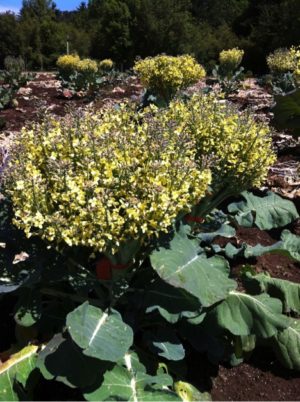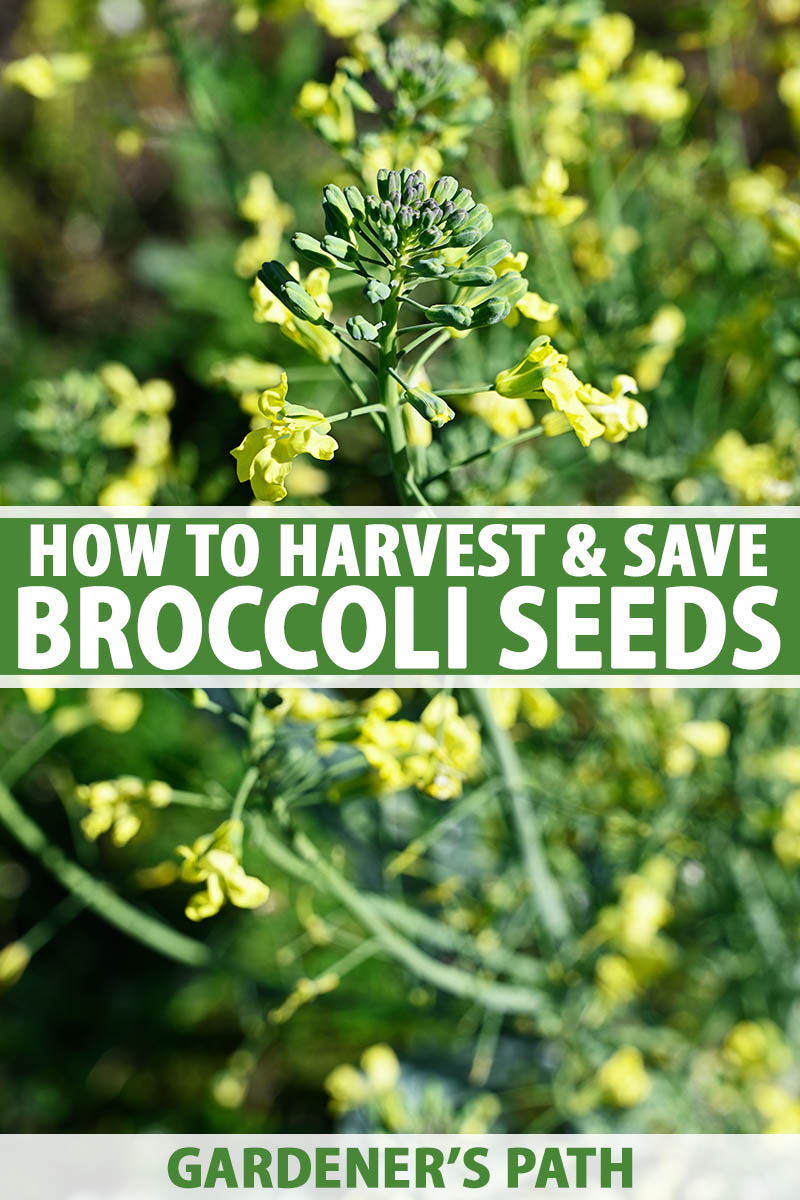To get seeds from broccoli, you need to let a broccoli plant go to seed and then harvest the seed pods when they turn brown and dry. Broccoli seeds can be obtained by allowing a broccoli plant to mature and produce seed pods.
The seed pods, which are green when young and turn brown and dry as they mature, contain the broccoli seeds. By following the correct harvesting process, you can obtain seeds from broccoli plants to grow your own broccoli in the future.

Credit: seedalliance.org
Understanding The Broccoli Life Cycle
Understanding the broccoli life cycle is crucial to successfully obtaining seeds from this delicious vegetable. Broccoli plants go through several growth stages before reaching the point of seed harvest.
In the initial stage, broccoli seeds are planted and sprout into seedlings. These small plants continue to grow, forming a central head. Once the head reaches its ideal size, side shoots begin to emerge. These side shoots produce additional smaller heads that can be harvested.
As the broccoli plants continue to grow, they eventually reach the flowering stage, where the buds on the side shoots start to open up into yellow flowers. This is a sign that the plants are preparing to produce seeds.
The final and most crucial stage for obtaining broccoli seeds is the seed formation stage. At this point, the yellow flowers turn into green pods that contain the developing seeds. It is important to identify the ideal time for seed harvest when the pods turn brown and dry out. Harvesting the seeds too early will result in immature seeds that won’t germinate properly, while harvesting them too late may lead to seed loss from pod shattering.
By understanding the different stages in the broccoli life cycle and identifying the opportune time for seed harvest, you can successfully obtain seeds from broccoli plants for future plantings.
How to Get Seeds from Broccoli: Step by Step Guide
Selecting Healthy Broccoli Plants
When selecting broccoli plants for seed collection, it’s essential to evaluate their health and quality. Choose the healthiest plants with vibrant, green foliage and sturdy stems. Avoid plants that have yellowing or wilted leaves, as it may indicate disease or nutrient deficiencies. Additionally, check for any signs of pests or damage, such as holes in the leaves or chewed stems.
Inspect the plants’ crowns, where the tight bud clusters are formed. Look for compact, firm heads that are free from blemishes or discoloration. This indicates that the broccoli is at peak maturity and is more likely to produce quality seeds.
Furthermore, take note of any plants that exhibit characteristics you want to preserve in future generations, such as early maturation or high yield. These traits can be passed on through careful seed selection and are valuable for creating a robust and productive broccoli variety.
Preparing For Seed Harvesting
To effectively harvest seeds from broccoli, it is important to prepare by gathering the necessary tools and materials. These will ensure a smooth and efficient process. Some essential tools include a pair of sharp garden shears or scissors, a large bowl or bucket, and a fine mesh strainer. Additionally, you may also need a clean towel or paper towels for drying the seeds.
Creating a suitable environment for seed extraction is another crucial step. This involves allowing the broccoli plants to fully mature and go to seed. The plant will develop seed heads which should be left untouched until they turn brown and dry out. This indicates that the seeds are ready to be harvested.
Once the seed heads have dried, gently cut them off and place them into a bowl or bucket. Rub the seed heads between your hands or use a sieve to separate the seeds from the chaff. The chaff, which includes the dry, outer husk, can be discarded. Finally, spread the seeds out on a clean towel or paper towels to dry completely before storing them in a cool, dry place.
Harvesting Broccoli Seeds
When it’s time to harvest broccoli seeds, start by removing the flower heads and stems. This will allow the seeds to mature properly before being collected. Wait until the broccoli plants have finished producing and the flowers have turned brown and dried out. Cut off the flower heads, making sure to leave a length of stem attached. Hang the flower heads upside down in a warm, dry place for about a week to allow the seeds to fully dry out.
Once the flower heads are dry, gently crumble them to release the seeds. You might need to use your hands or a small tool like a brush to separate the seeds from the chaff. Collect the seeds in a clean, dry container like a glass jar or an envelope. Make sure to label the container with the type of seed and the date of collection.
| Harvesting Broccoli Seeds |
|---|
| Removing flower heads and stems |
| Collecting broccoli seeds |
Cleaning And Drying Seeds
To get seeds from broccoli, it is important to clean and dry them properly. Start by removing any debris and unwanted materials from the seeds. This can be done by gently rubbing the seeds between your fingers or using a fine mesh strainer. Make sure to discard any damaged or discolored seeds.
Once the seeds are cleaned, it’s time to dry them for optimal storage. Spread the seeds in a single layer on a clean, dry surface, such as a paper towel or a baking sheet. Place them in a well-ventilated area away from direct sunlight.
Allow the seeds to dry completely, which usually takes about one to two weeks. You can test if the seeds are dry by pressing your fingernail into one. If it feels hard and does not leave an impression, they are ready.
After the seeds are thoroughly dried, store them in a cool and dry place, such as an airtight container or a paper envelope. Label the container with the date and variety of the seeds for future reference.
Proper Storage Conditions
When collecting seeds from broccoli, proper storage conditions are essential to ensure their viability and longevity. Optimal temperature and humidity levels play a crucial role in maintaining seed quality.
It is recommended to store broccoli seeds in a cool and dry environment. The ideal temperature for seed storage is around 40 to 50 degrees Fahrenheit (4 to 10 degrees Celsius). High temperatures can negatively affect seed germination rates and reduce their viability over time.
In terms of humidity, it is important to keep the moisture levels low to prevent seed degradation. Moisture can cause seeds to mold or sprout prematurely, rendering them unusable. Storing seeds in airtight containers with desiccants, such as silica gel packets, can help maintain low humidity levels.
Choosing appropriate containers for seed storage is also crucial. Opt for containers that are moisture-proof and can be tightly sealed to prevent any moisture or air from entering. Glass jars with rubber gaskets or airtight plastic containers are great options for keeping seeds safe and dry.
By following proper storage conditions, you can ensure the longevity and viability of your harvested broccoli seeds for future planting seasons.
Length Of Seed Viability
Seed viability refers to the ability of seeds to germinate and produce healthy plants. When it comes to broccoli seeds, their viability can vary depending on several factors. Determining the lifespan of broccoli seeds is essential for successful seed saving and gardening. It’s important to understand the factors that affect seed viability to ensure the best chances of germination.
| Factors Affecting Seed Viability |
|---|
| 1. Temperature and Humidity |
| 2. Storage Conditions |
| 3. Seed Age |
| 4. Genetic Variation |
| 5. Harvest Maturity |
Temperature and humidity play a crucial role in determining seed viability. Proper storage conditions, such as cool and dry environments, are essential to extend the shelf life of broccoli seeds. Moreover, seed age directly impacts viability, as older seeds have lower germination rates. Genetic variation in different broccoli varieties can also affect seed viability. Lastly, harvesting broccoli seeds at the optimal maturity stage is crucial for maximum viability.
By understanding and considering these factors, you can improve your chances of obtaining viable seeds from your broccoli plants. Ensure proper storage conditions, use fresh seeds, select varieties with good genetics, and harvest at the right time to enhance seed viability.
Saving Seeds For The Next Planting Season
When saving seeds from broccoli for the next planting season, it is important to properly label and organize them. This will help you keep track of the varieties and ensure that you can easily find the seeds when it’s time to plant. One way to label the seeds is by using small envelopes or containers and writing the name of the variety on them. You can also include the date when the seeds were collected to help you determine their viability over time.
Maintaining seed viability is crucial for successful germination, so it is important to store the seeds in a cool, dry place. Additionally, it is recommended to store the seeds in airtight containers or jars to prevent moisture or pests from damaging them. By following these practices, you can get high-quality seeds from broccoli and ensure a successful planting season.
Frequently Asked Questions Of How To Get Seeds From Broccoli
How Fast Do Broccoli Seeds Sprout?
Broccoli seeds sprout quickly, usually within 4 to 7 days.
How Do You Get Broccoli Seeds In Scrap Mechanic?
To get broccoli seeds in Scrap Mechanic, you need to find vegetables in the world, harvest them, and then use the Vegetable Crusher to obtain seeds.
How Do You Get Seeds From Broccoli Plants?
To get seeds from broccoli plants, allow some of the broccoli plants to mature and bolt, which means they start to flower. Once the flowers fade and seed pods start to form, wait until the pods turn brown and dry.
Then, harvest the pods, remove the seeds, and store them in a cool, dry place.
Can You Save The Seeds From Store-bought Broccoli?
Yes, you can save the seeds from store-bought broccoli. However, keep in mind that many store-bought broccoli heads are hybrids, which means the resulting plants might not have the same characteristics as the parent plant. If you want to save the seeds, choose heirloom broccoli varieties, which produce seeds that reliably grow into similar plants.
Conclusion
To conclude, learning how to get seeds from broccoli can be a rewarding experience for any gardener. By following the steps mentioned in this blog post, you can harvest your own seeds and ensure a continuous supply of delicious broccoli in your garden.
From saving money to promoting sustainability, seed saving is a skill that every aspiring gardener should have. So go ahead and give it a try, and watch your broccoli garden thrive!

